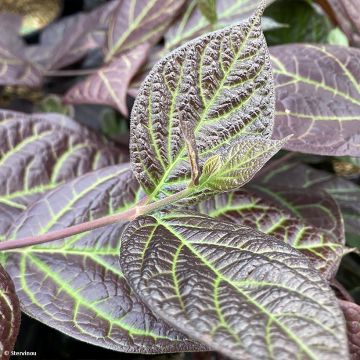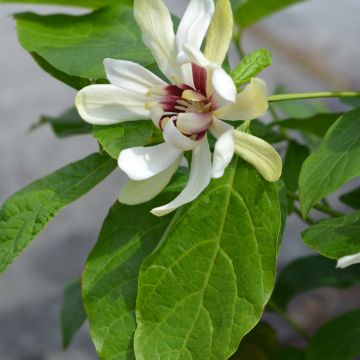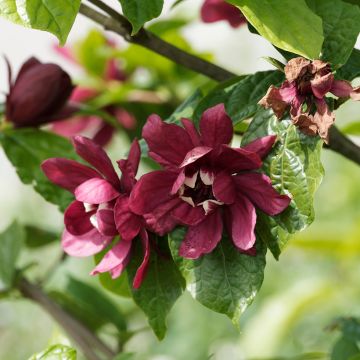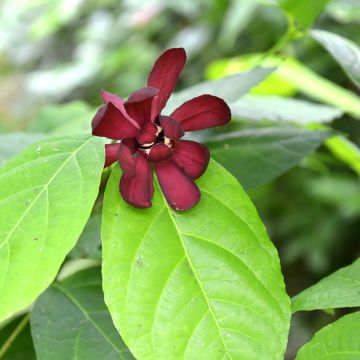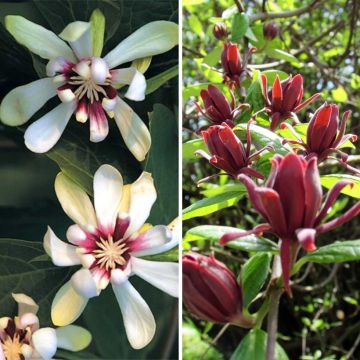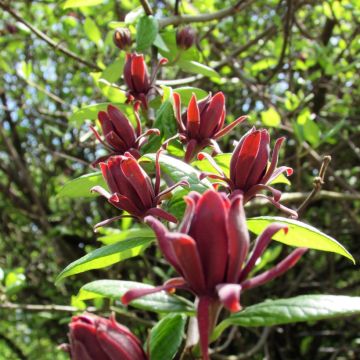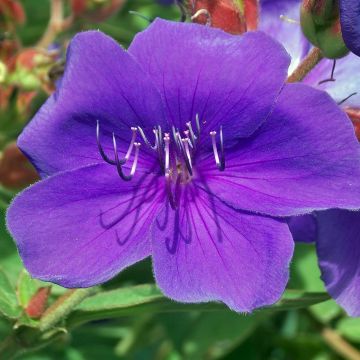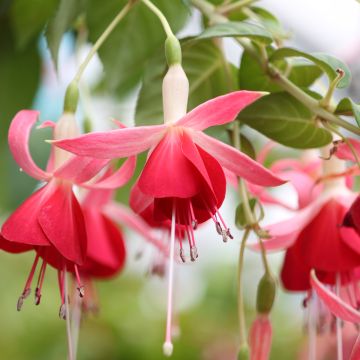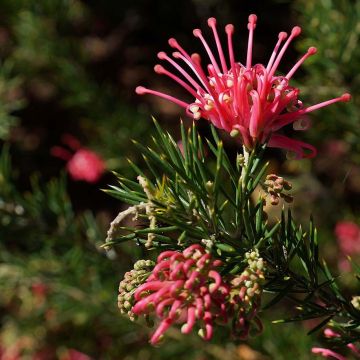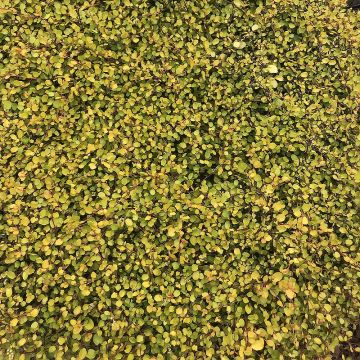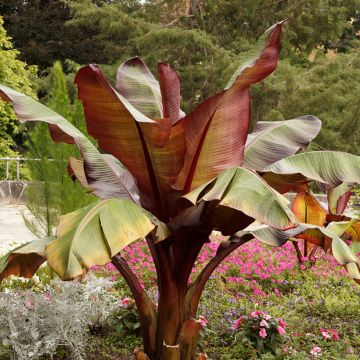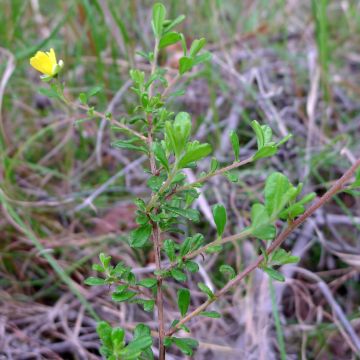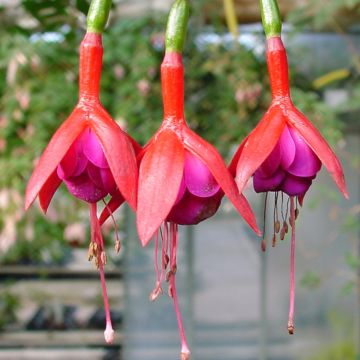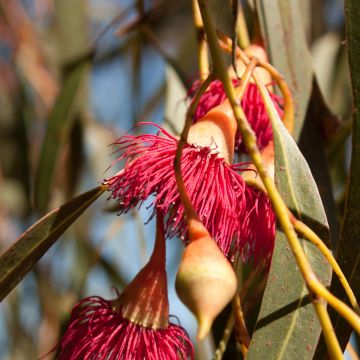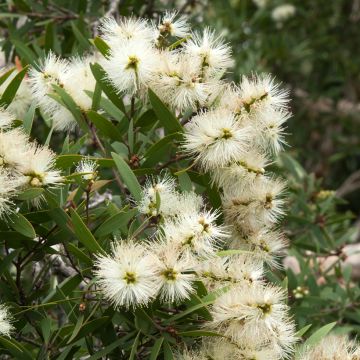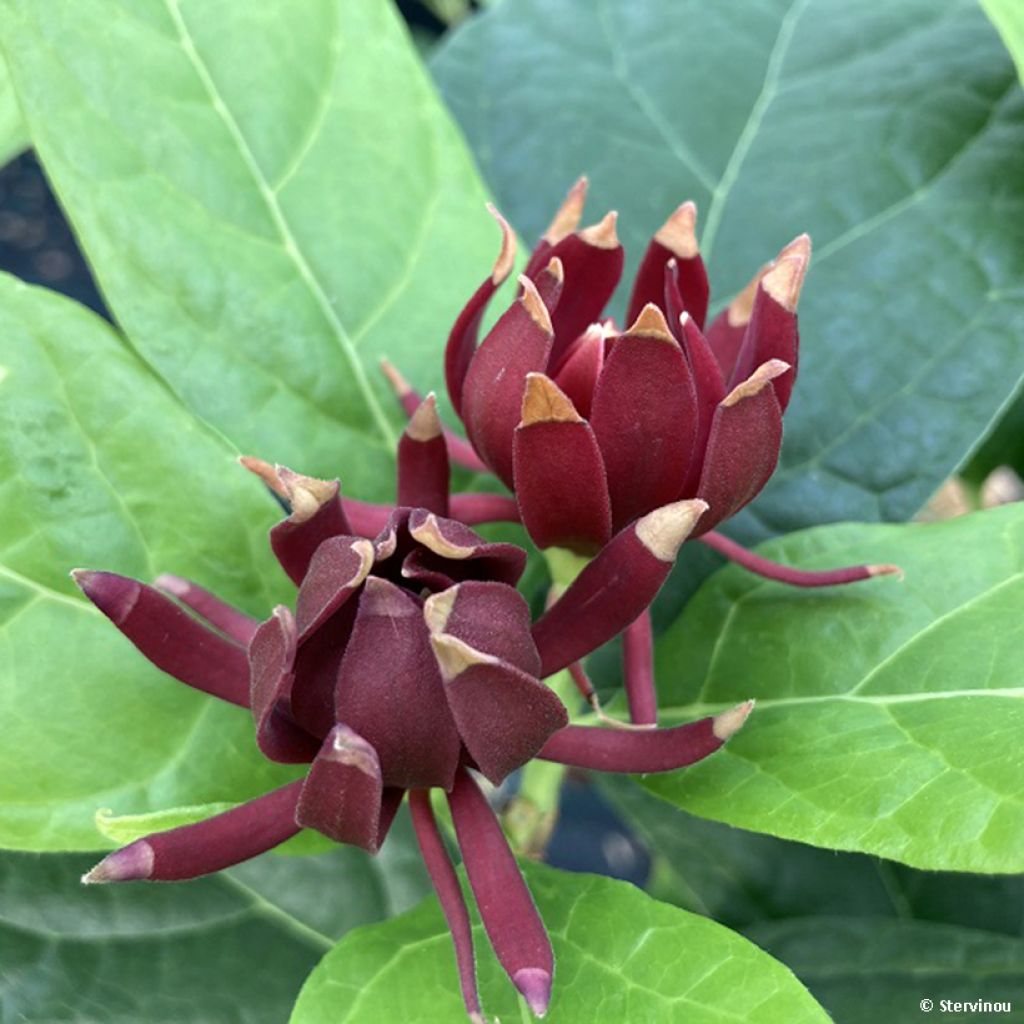

Calycanthus floridus Michael Lindsay- Sweetshrub
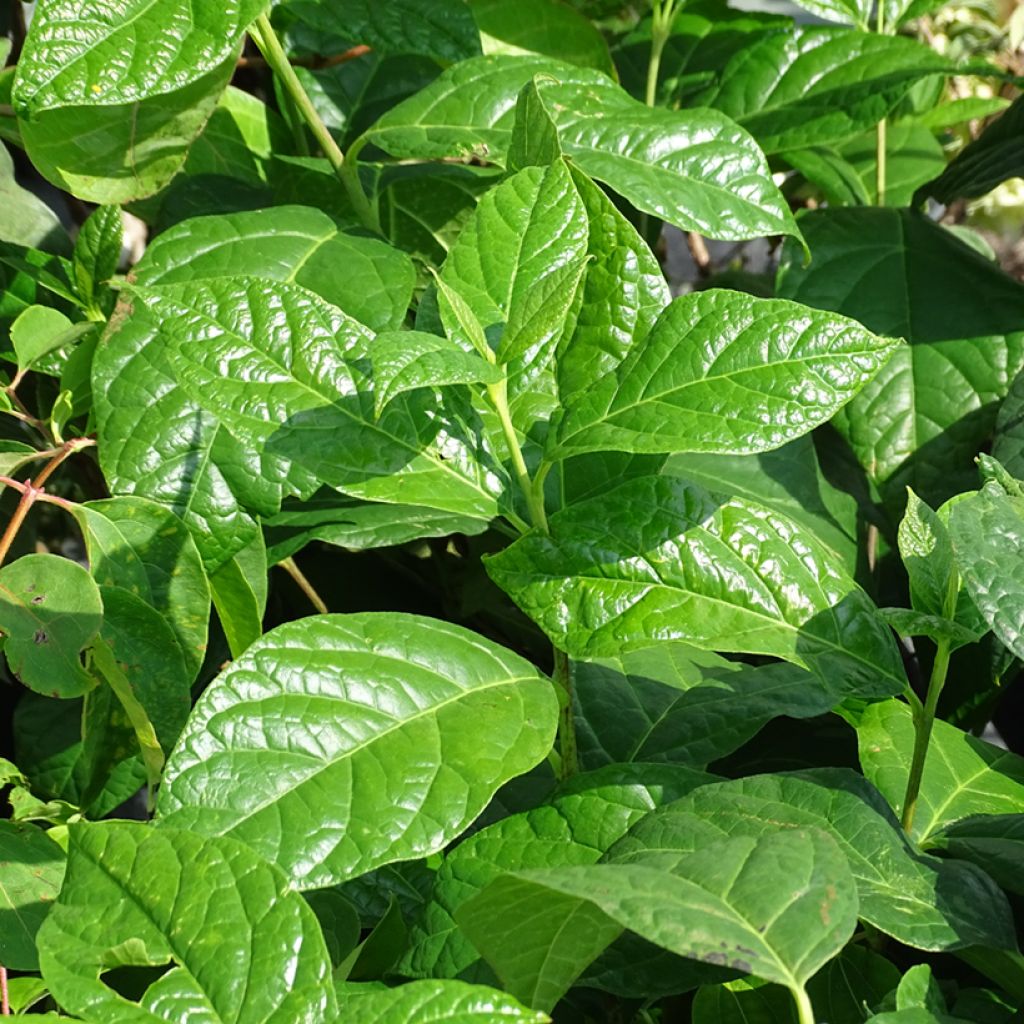

Calycanthus floridus Michael Lindsay- Sweetshrub
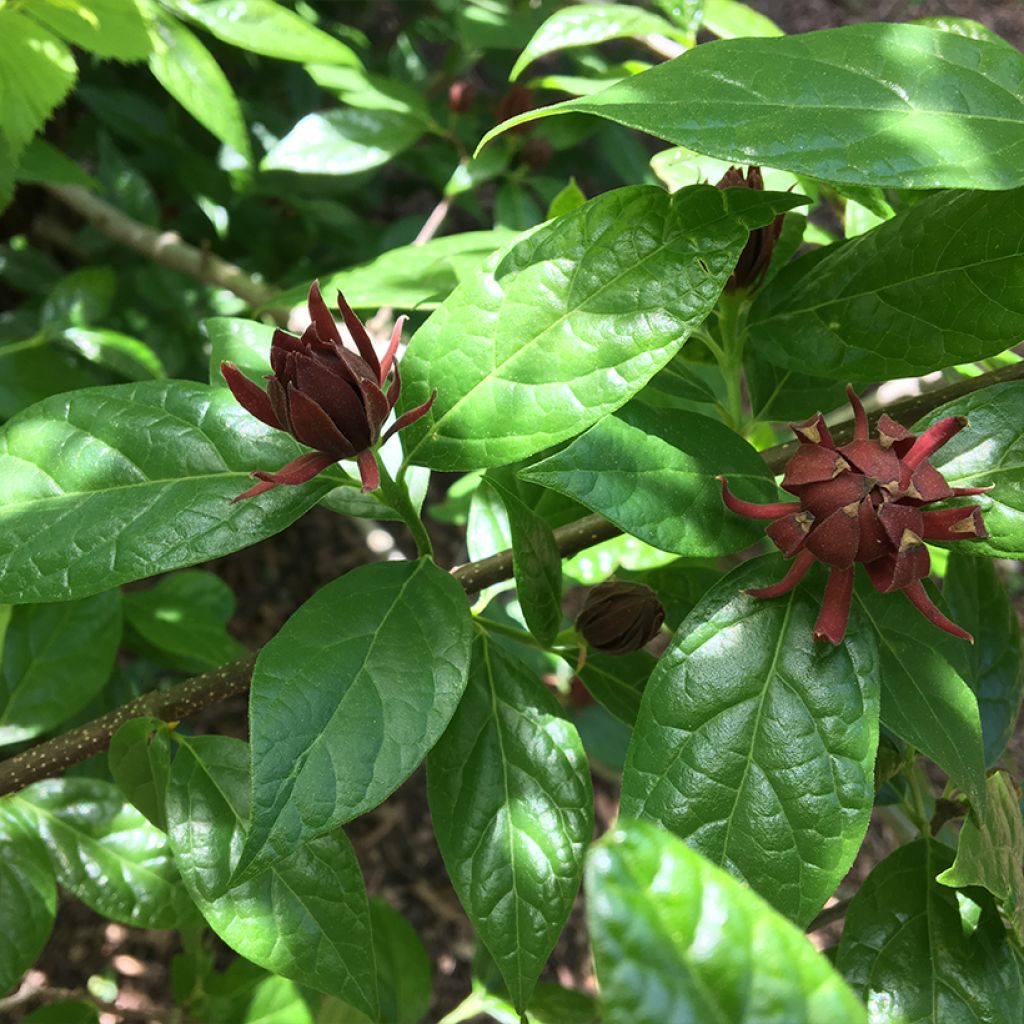

Calycanthus floridus Michael Lindsay- Sweetshrub
Calycanthus floridus Michael Lindsay- Sweetshrub
Calycanthus floridus Michael Lindsay
Carolina allspice, sweetshrub, strawberry bush, spicebush
This item cannot be shipped to the selected country
Delivery charge from €5.90
More information
Schedule delivery date,
and select date in basket
This plant carries a 24 months recovery warranty
More information
We guarantee the quality of our plants for a full growing cycle, and will replace at our expense any plant that fails to recover under normal climatic and planting conditions.
From €5.90 for pickup delivery and €6.90 for home delivery
Express home delivery from €8.90.
Does this plant fit my garden?
Set up your Plantfit profile →
Description
Calycanthus floridus 'Michael Lindsay' is a variety of strawberry bush that is interesting for its abundant and particularly fragrant flowers, its well-branched habit, and its golden autumn foliage. The shrub blooms in late spring: on its beautiful glossy green leaves, large flowers of reddish-brown, unusual and dark, appear as if they were placed directly on the branches. They release an extraordinary scent of strawberry and spices. Of medium stature, with a lovely habit, hardy and requiring little maintenance, this Strawberry bush integrates well into a loose hedge, a large shrub border, or as a background plant in a perennial border.
Calycanthus floridus 'Michael Lindsay' is a horticultural selection by Allen Bush (USA). The botanical species is native to the eastern coast of the United States and was introduced to Europe in 1806. It is an aromatic shrub in all its parts, with bark and foliage that have a slight camphor scent. This Michael Lindsay variety has a bushy, well-branched, rather compact habit and will reach a height of 2.2 to 2.3 m (7 ft 2 in to 7 ft 6 in) in all directions at maturity, which is typically at the age of 5-6 years. Its branches bear leaves that are 7 to 13 cm (2.8 to 5.1 in) long, ovate and slightly fuzzy, shiny on the upper side and lighter on the underside. They turn butter-yellow and golden-yellow in autumn before falling off. Flowering takes place in May-June, on new shoots. The original cup-shaped flowers have wide petals and are burgundy-red with a wash of brown, with distinct lanceolate petaloid sepals arranged in spirals. The flower's centre is occupied by purple stamens. The scent of the flowers evokes, according to observers, strawberries and exotic fruits, with a beautiful spicy note. The fruits resemble small elongated hazelnuts and are contained in curious small brown fuzzy pouches. These seeds are toxic and should be kept away from children and animals. The shrub tends to produce a few suckers on the periphery of the stump. Remove these suckers promptly if you want to limit its spread.
This Michael Lindsay strawberry bush is of great ornamental value and rather easy to cultivate. It can be used, according to each gardener's desires and the space available, as a standalone specimen, in a loose and rustic hedge, or in a large border mixing perennials and small shrubs. The fragrance and beauty of the flowers will be best enjoyed near a pathway or not far from the terrace. To accompany it, one can choose, for example, variegated dogwoods Elegantissima, tree peonies, pheasant's eye, a golden ninebark, or a Neillia splendens, etc.
Calycanthus flowers resemble those of anemones in size and shape, but the fragrance is quite different: it is reminiscent of strawberries, and it is this characteristic that the English name "strawberry bush" refers to.
Report an error about the product description
Calycanthus floridus Michael Lindsay- Sweetshrub in pictures
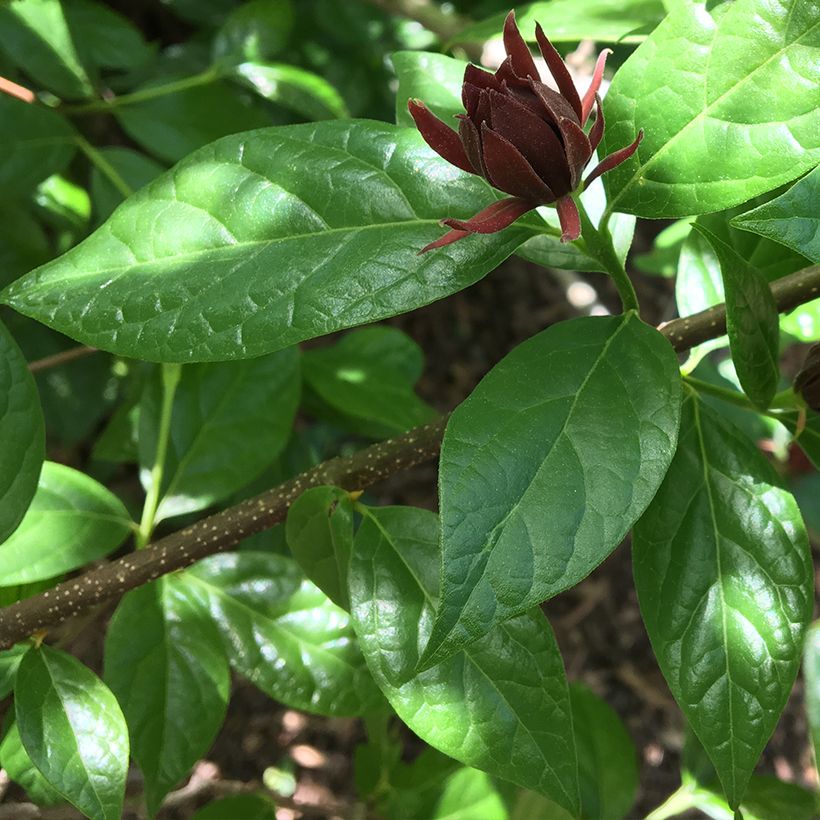

Plant habit
Flowering
Foliage
Botanical data
Calycanthus
floridus
Michael Lindsay
Calycanthaceae
Carolina allspice, sweetshrub, strawberry bush, spicebush
Cultivar or hybrid
Other Calycanthus
Planting and care
Calycanthus floridus 'Michael Lindsay' tolerates partially shaded situations quite well, but thrives much better in full sun. Its colours are also more pronounced in the sun. Similarly, it grows in any type of sufficiently deep and moist soil, but it will develop better in a slightly acidic to neutral soil, or even slightly lime-free, loamy or humus-rich soil. Do not hesitate to combine it with your heather beds as acidity does not deter it, but pure heather soil is a bit too poor for it. Add compost at the base of this shrub, and keep the soil moist with mulching. Be sure to remove suckers if you do not want it to spread too much. Pruning should be done in late winter if necessary.
Planting period
Intended location
Care
This item has not been reviewed yet - be the first to leave a review about it.
Exotic shrubs
Haven't found what you were looking for?
Hardiness is the lowest winter temperature a plant can endure without suffering serious damage or even dying. However, hardiness is affected by location (a sheltered area, such as a patio), protection (winter cover) and soil type (hardiness is improved by well-drained soil).

Photo Sharing Terms & Conditions
In order to encourage gardeners to interact and share their experiences, Promesse de fleurs offers various media enabling content to be uploaded onto its Site - in particular via the ‘Photo sharing’ module.
The User agrees to refrain from:
- Posting any content that is illegal, prejudicial, insulting, racist, inciteful to hatred, revisionist, contrary to public decency, that infringes on privacy or on the privacy rights of third parties, in particular the publicity rights of persons and goods, intellectual property rights, or the right to privacy.
- Submitting content on behalf of a third party;
- Impersonate the identity of a third party and/or publish any personal information about a third party;
In general, the User undertakes to refrain from any unethical behaviour.
All Content (in particular text, comments, files, images, photos, videos, creative works, etc.), which may be subject to property or intellectual property rights, image or other private rights, shall remain the property of the User, subject to the limited rights granted by the terms of the licence granted by Promesse de fleurs as stated below. Users are at liberty to publish or not to publish such Content on the Site, notably via the ‘Photo Sharing’ facility, and accept that this Content shall be made public and freely accessible, notably on the Internet.
Users further acknowledge, undertake to have ,and guarantee that they hold all necessary rights and permissions to publish such material on the Site, in particular with regard to the legislation in force pertaining to any privacy, property, intellectual property, image, or contractual rights, or rights of any other nature. By publishing such Content on the Site, Users acknowledge accepting full liability as publishers of the Content within the meaning of the law, and grant Promesse de fleurs, free of charge, an inclusive, worldwide licence for the said Content for the entire duration of its publication, including all reproduction, representation, up/downloading, displaying, performing, transmission, and storage rights.
Users also grant permission for their name to be linked to the Content and accept that this link may not always be made available.
By engaging in posting material, Users consent to their Content becoming automatically accessible on the Internet, in particular on other sites and/or blogs and/or web pages of the Promesse de fleurs site, including in particular social pages and the Promesse de fleurs catalogue.
Users may secure the removal of entrusted content free of charge by issuing a simple request via our contact form.
The flowering period indicated on our website applies to countries and regions located in USDA zone 8 (France, the United Kingdom, Ireland, the Netherlands, etc.)
It will vary according to where you live:
- In zones 9 to 10 (Italy, Spain, Greece, etc.), flowering will occur about 2 to 4 weeks earlier.
- In zones 6 to 7 (Germany, Poland, Slovenia, and lower mountainous regions), flowering will be delayed by 2 to 3 weeks.
- In zone 5 (Central Europe, Scandinavia), blooming will be delayed by 3 to 5 weeks.
In temperate climates, pruning of spring-flowering shrubs (forsythia, spireas, etc.) should be done just after flowering.
Pruning of summer-flowering shrubs (Indian Lilac, Perovskia, etc.) can be done in winter or spring.
In cold regions as well as with frost-sensitive plants, avoid pruning too early when severe frosts may still occur.
The planting period indicated on our website applies to countries and regions located in USDA zone 8 (France, United Kingdom, Ireland, Netherlands).
It will vary according to where you live:
- In Mediterranean zones (Marseille, Madrid, Milan, etc.), autumn and winter are the best planting periods.
- In continental zones (Strasbourg, Munich, Vienna, etc.), delay planting by 2 to 3 weeks in spring and bring it forward by 2 to 4 weeks in autumn.
- In mountainous regions (the Alps, Pyrenees, Carpathians, etc.), it is best to plant in late spring (May-June) or late summer (August-September).
The harvesting period indicated on our website applies to countries and regions in USDA zone 8 (France, England, Ireland, the Netherlands).
In colder areas (Scandinavia, Poland, Austria...) fruit and vegetable harvests are likely to be delayed by 3-4 weeks.
In warmer areas (Italy, Spain, Greece, etc.), harvesting will probably take place earlier, depending on weather conditions.
The sowing periods indicated on our website apply to countries and regions within USDA Zone 8 (France, UK, Ireland, Netherlands).
In colder areas (Scandinavia, Poland, Austria...), delay any outdoor sowing by 3-4 weeks, or sow under glass.
In warmer climes (Italy, Spain, Greece, etc.), bring outdoor sowing forward by a few weeks.

































